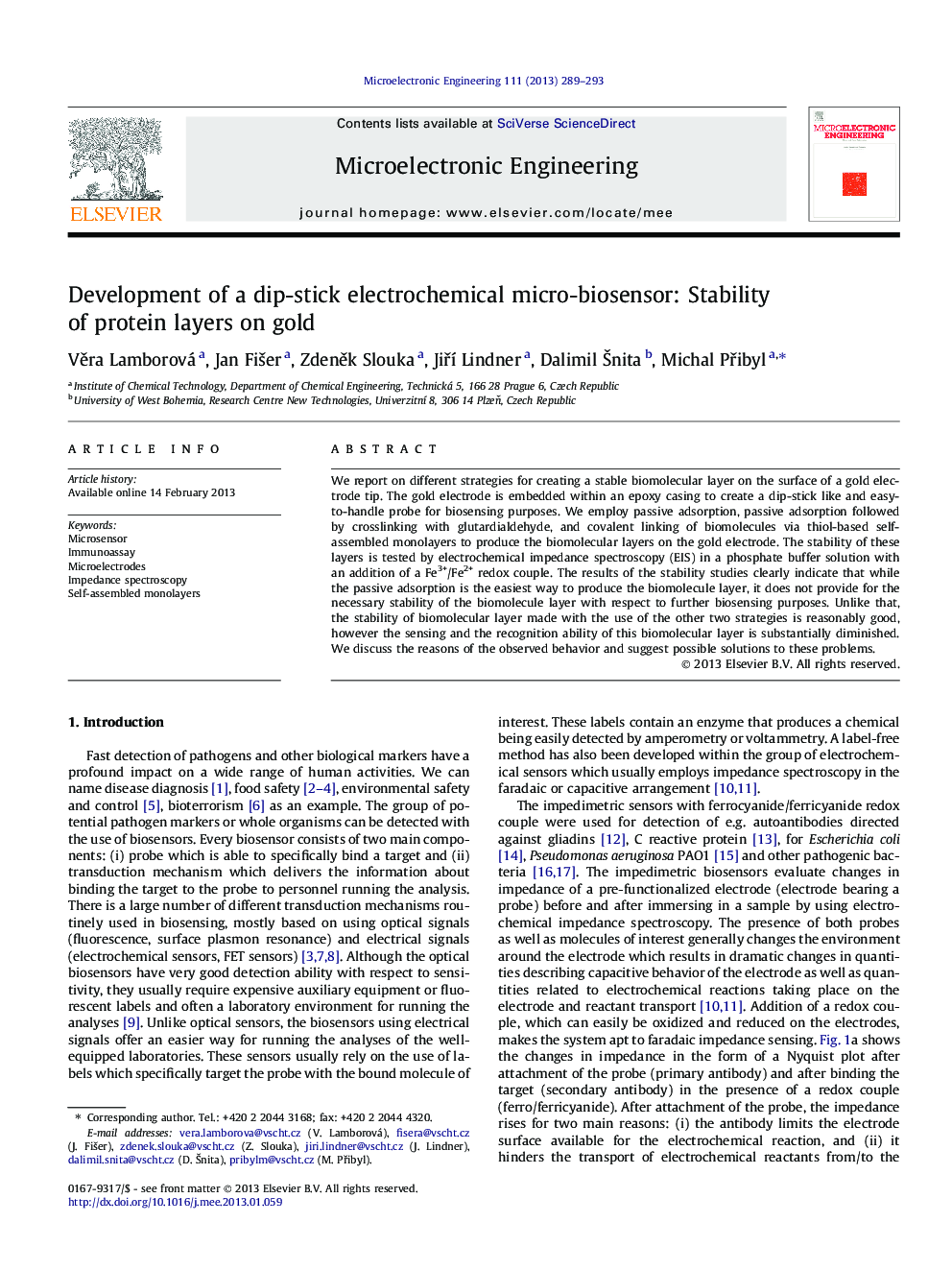| Article ID | Journal | Published Year | Pages | File Type |
|---|---|---|---|---|
| 540000 | Microelectronic Engineering | 2013 | 5 Pages |
We report on different strategies for creating a stable biomolecular layer on the surface of a gold electrode tip. The gold electrode is embedded within an epoxy casing to create a dip-stick like and easy-to-handle probe for biosensing purposes. We employ passive adsorption, passive adsorption followed by crosslinking with glutardialdehyde, and covalent linking of biomolecules via thiol-based self-assembled monolayers to produce the biomolecular layers on the gold electrode. The stability of these layers is tested by electrochemical impedance spectroscopy (EIS) in a phosphate buffer solution with an addition of a Fe3+/Fe2+ redox couple. The results of the stability studies clearly indicate that while the passive adsorption is the easiest way to produce the biomolecule layer, it does not provide for the necessary stability of the biomolecule layer with respect to further biosensing purposes. Unlike that, the stability of biomolecular layer made with the use of the other two strategies is reasonably good, however the sensing and the recognition ability of this biomolecular layer is substantially diminished. We discuss the reasons of the observed behavior and suggest possible solutions to these problems.
Graphical abstractFigure optionsDownload full-size imageDownload as PowerPoint slideHighlights► Gold electrode tips with biomolecular layer were prepared. ► Passive adsorption of antibodies, adsorption followed by cross-linking, and thiol-based immobilization were tested. ► The cross-linking and thiol-based immobilization led to the formation of stable sensing layers. ► Biomolecular layers were characterized by impedance spectroscopy. ► The tips were used as biosensor probes for the detection of antibodies.
